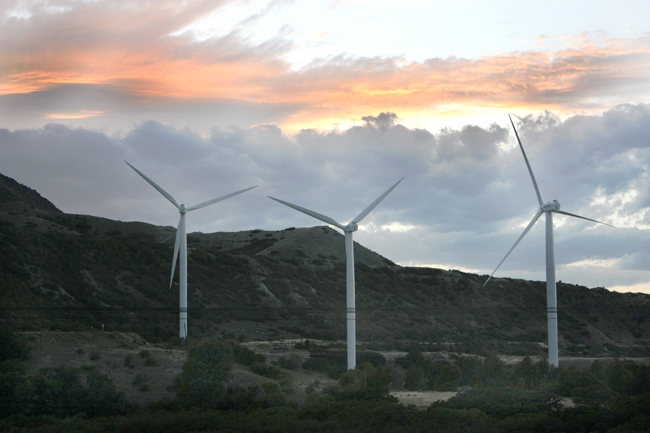USU helps create wind power industry in Utah
Two professors for USU’s Huntsman School of Business practice what they preach by helping create a new industry in the state of Utah – wind energy.
Cathy Hartman and Edwin Stafford have committed to teach USU’s Huntsman School of Business students four primary goals: global mission, ethics, analytics and entrepreneurship. During the past few years they have done more than just teach those goals.
“We’ve helped to kick-start a brand new industry in the state of Utah,” Stafford said, “so in a sense we are living the Huntsman ideals of entrepreneurship amongst our students.”
Hartman and Stafford have been working for years to create Utah’s first wind energy facility, and it’s been far from easy, they said. Because this wind park is the first of its kind in Utah, new laws, taxes and legislator had to be created, which, Hartman said, is just as hard as it sounds. Each step takes months, such as creating policy to price wind power which, Stafford said, consisted of bargaining with the public service commission, dealing with Rocky Mountain Power and creating a formula to establish a fair price for wind power. Stafford testified in front of the state’s legislature as well, referring to the experience as one of the toughest things he has ever done.
After years of dealing with plans, policies, the falling dollar and the rise in prices for everything from steel to concrete, on Sept. 5 and 6, Stafford and Hartman’s hard work finally paid off when the $32 million project officially opened with the Sky Spectacular Event. The City of Spanish Fork estimates 20,000 people attended the two-day ceremony, during which Stafford gave a speech and Hartman accepted an award from the town’s mayor. Friday, Sept. 5, was a great day full of fun, Stafford said. His two young daughters especially enjoyed making and flying their own kites, he said. Eighteen hundred kites were made that day in the kite workshop and hundreds more flew above the crowds, including an octopus kite spanning more than 100 feet. During the event Spanish Fork Mayor Joe Thomas officially declared Sept.6 as Wind Power Day.
The Huntsman School of Business was a major sponsor for the event. Stafford said the business school was always very supportive and helpful.
From the tip of the blade, each of the nine turbines stand 400 feet and can create 2.1 megawatts of power, together, the turbines will create an average of 19 megawatts of power, or enough to power around 6,500 average size homes at any given time. Hartman said in the morning, when the project is at peak output, the Spanish Fork Wind Park can generate enough energy to provide electrical power to 19,000 homes. Annually these nine turbines will produce sufficient power for 74 percent of Spanish Fork’s electrical needs.
The project’s developer, Wasatch Wind, is headed by Tracy Livingston and is run out of Heber City, Utah. The company was founded in 2002 to research, develop and commercialize wind turbines. Wasatch Wind later sold the project to the Edison Mission Group, based in Southern California.
“We consider Tracy to be the real champion of wind power development in this state,” Hartman said.
The Spanish Fork Wind Park may have been the first wind park in Utah but it certainly won’t be the last, Stafford said.
“We are doing research projects right now in Summit County and San Juan County that will benefit not only Wasatch Wind, but other wind developers in the state,” he said. “Cathy and I act as support for all of them.
“There is a major wind project going on right now in Beaver and Miller Counties, that will dwarf what’s in Spanish Fork by its overall size.”
Hartman and Stafford aren’t relaxing now that the Spanish Fork Wind Park is up and running; they recently hired a documentary film maker to help make a 30-minute film about the project. Hartman says the film is important because, “This wind farm is Utah history in the making.”
Utah State is doing their part as well. USU is one of the few universities in the country that produces their own electricity. USU has been in the forefront of energy conservation among universities for years with hydro-power coming from First Dam, an innovative natural gas system and a new heating and chilling system. After these changes Utah State is reportedly saving $2 million annually. USU is looking to continue their pioneering efforts and in 2006 installed an anemometer tower near the mouth of Logan Canyon. This anemometer is testing the feasibility of placing a turbine on USU land to help produce electrical power and, according to USU’s energy plan, the possibility of a turbine being built is quite real. So don’t be surprised if in a couple years Utah State is the first state university to use the power of the wind to power their buildings.
–c.h.j@aggiemail.usu.edu

